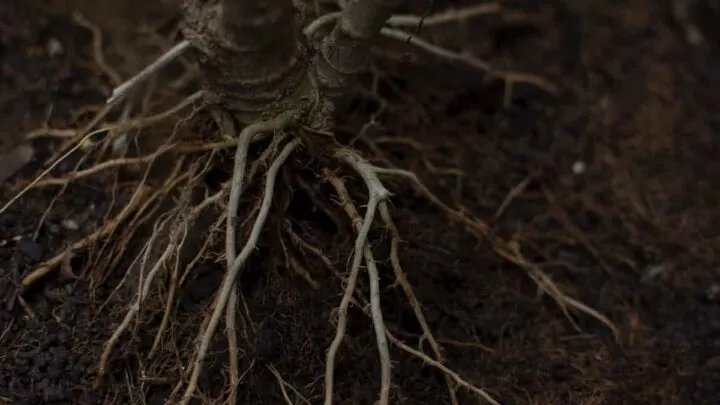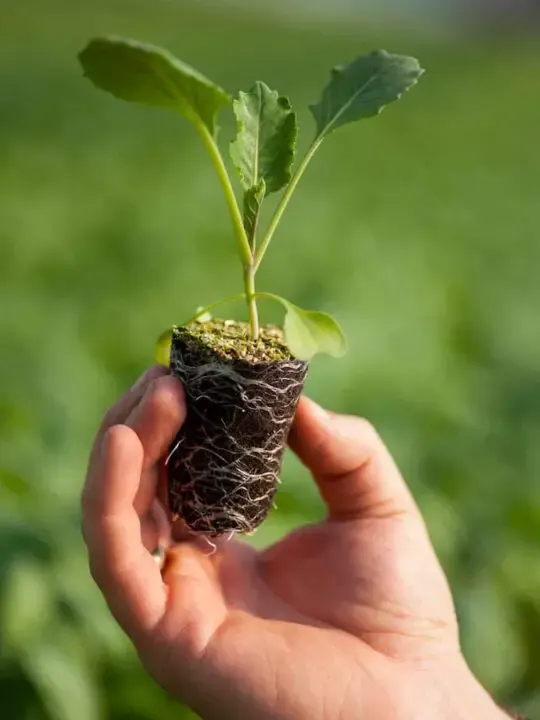Whether it was a re-potting effort gone wrong, or something burrowing in your beloved flowerbeds, you can’t always keep your plants from losing some roots. In some cases, this can jeopardize the plant’s health; in others, it’s just a minor bump in the road. Still, it’s helpful to know – do plant roots grow back?
In the majority of cases, yes. It isn’t always possible, but as long as over 50% of the root system is still there, your plant should be able to grow its roots back.
That’s good news, but what should you do if you have a plant with a damaged root system? Read on to find out more!

Can a plant recover from root damage?
It generally can – assuming that most of the root system is still fine. How many roots were damaged will be a significant factor in the plant’s recovery, so you’ll want to assess that as soon as you discover the damaged roots.
Another factor will be whether or not the plant has been replanted (or will be later). This process can cause the plant to go into shock, which is an additional stress source for coping with the damaged roots.
Replanting may have been the cause of the damage, or the plant may have been replanted after being inadvertently unearthed. Either way, it’s something to consider if you’re wondering whether or not your plant can recover from root damage.
How can I regrow a plant’s roots?
Plants have evolved to survive under harsh circumstances if necessary, so as long as they’re in a friendly environment, they’ll try their best to grow those roots back. Here’s what would help:
- Soil – While some plants can be propagated in water, most will do better in the dirt. Make sure that it’s the right type of soil and fairly loose so that new roots can grow more easily.
- Water – If you’re replanting a plant with damaged roots, it’s essential to coddle it with the perfect amount of water. Unless the plant prefers otherwise, give it moderate water at regular intervals, letting the soil mostly dry out between waterings.
- Light – Like with water, you should give your recovering plant the perfect amount of light. Too little, and it won’t be getting what it needs for optimal functioning. Too much, and that’ll turn into an additional stressor for an already stressed-out plant.
- Rooting hormones – This isn’t necessary, but it will boost your plant where root growth is concerned. Make sure you follow the directions on the label – you may have to dilute the rooting hormone, dip the roots in it, inject it into the soil, or something else equally specific.
- Support – Your emotional support will probably be much appreciated, but a plant with damaged roots also needs physical support. The root system would normally hold the plant upright, but if that’s become too damaged to do the job, a stick or bamboo skewer inserted into the soil should be an adequate substitute.

Would it help to propagate a plant with damaged roots in water?
Even though propagation in water can work for plant cuttings, this is a slightly different scenario. The plant already has at least a partial root system, and you’re trying to save what’s left.
This being the case, submerging in water won’t help a plant with damaged roots unless it’s severely dehydrated. In most cases, the best thing would be to replant immediately and follow up by watering to ensure the roots don’t dry out.
How long can a plant survive with damaged or missing roots?
Assuming the plant has also been uprooted, you’ll have about five days to a week before reaching the point of no return. The sooner you get the plant back into the soil and recover from the damage, the better.
How long does it take for plant roots to grow back?
If you’re talking about a plant that’s suffered severe root damage, it could take three to four weeks before new roots start growing. You must be patient and consistent and trust the plant to care for the rest. And don’t disturb the soil to check on root growth!
That would stress the plant out even more. Instead, let the plant take its own sweet time to start adding more roots. If you see that it’s growing and flourishing after several weeks, your plant is in good shape.

Can roots grow back into plants?
What about the opposite scenario – the roots are still there, but the stems, leaves, flowers, etc., are gone? This is another way to propagate plants, and it’s fairly effective when done correctly.
For best results, propagating a root system should be done during the winter to ensure that the plant has plenty of stored energy in the roots. However, if you’re trying to revive a plant that’s been damaged, you can’t always choose when it gets propagated.
In this case, you should follow most of the steps for the plants trying to regrow roots: loose soil and just enough water and sunlight. As long as the root system is fairly intact and has enough nutrient stores, you should end up with a healthy plant.
Can a plant grow without roots?
Unless it’s a plant like seaweed or algae, which doesn’t have roots, the plant will need roots to grow. After all, that’s how it absorbs water and nutrients; take away the roots, and the plant will die fairly quickly.
The takeaway
There are many ways for a plant’s roots to become damaged, but the solution is usually the same: replant it, give it enough water and sunlight, and have plenty of patience. That plant will be putting all of its efforts into surviving the partial loss of its root system; all you have to do is ensure it has everything it needs to make that happen.

Hi there, my name is Allie and welcome to my blog; GareningWithAllie!
Much of what you see written here is just our personal experiences with gardening. Along with the content I write here, there is also a unique collection of gardening topics covered by some of our close friends. I hope you find everything you read here to be helpful, informative, and something that can make your gardening journey the most lovely experience ever! With that said, Happy Gardening!
